Recommendations: Agile Software Development
Agile Software Development
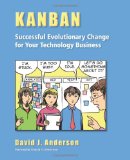 Kanban is an informative book, but one that could be more tightly written. I learned a lot from reading this book, but the presentation sometimes made it harder than it could have. It clearly explains the basics of Kanban and how to apply it to software developments well as both how a Kanban approach differs, and can be used to support, Agile methods such as Scrum. The anecdotes and examples in the book help you to understand how to apply Kanban in real projects in organizations of varying sizes, and the takeaways section at the end of each chapter has a concise summary of what the chapter discussed. On the other hand, some of the anecdotes were a bit long and rambling, and contrasted sharply with other very well focused sections. This would have been a much better book had the author either kept the anecdotes briefer, or started the longer anecdotes with some more guidance about what we might expect to learn from the subsequent story.
If you are willing to skim a bit (and occasionally backtrack) you can get a lot of value from this book if you want to learn about Kanban. This is a good book. It could have been a much better one.
Kanban is an informative book, but one that could be more tightly written. I learned a lot from reading this book, but the presentation sometimes made it harder than it could have. It clearly explains the basics of Kanban and how to apply it to software developments well as both how a Kanban approach differs, and can be used to support, Agile methods such as Scrum. The anecdotes and examples in the book help you to understand how to apply Kanban in real projects in organizations of varying sizes, and the takeaways section at the end of each chapter has a concise summary of what the chapter discussed. On the other hand, some of the anecdotes were a bit long and rambling, and contrasted sharply with other very well focused sections. This would have been a much better book had the author either kept the anecdotes briefer, or started the longer anecdotes with some more guidance about what we might expect to learn from the subsequent story.
If you are willing to skim a bit (and occasionally backtrack) you can get a lot of value from this book if you want to learn about Kanban. This is a good book. It could have been a much better one.
Related books
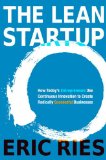 If you are familiar with Lean or Agile software development you have probably heard many of the concepts in this book. Eric Ries explains how to use the techniques of lean production including testing, feedback, and other key agile development enablers at the business and organizational level to innovate. The book emphasizes that the key to getting better at what you do is to have goals, test, measure, and use techniques like "5 Why's" to understand problems, This book will help you to understand understand that being lean is an organization-wide process. An enjoyable read, filled with stories from both Ries' consulting and startup experience and filled with references to sources for more information, this book can help you to understand how to innovate, whether you are working on a project of starting a company. Business people will learn more about lean engineering, engineers will learn how lean applies to the business. (These comments are based on an advanced review copy of the book)
If you are familiar with Lean or Agile software development you have probably heard many of the concepts in this book. Eric Ries explains how to use the techniques of lean production including testing, feedback, and other key agile development enablers at the business and organizational level to innovate. The book emphasizes that the key to getting better at what you do is to have goals, test, measure, and use techniques like "5 Why's" to understand problems, This book will help you to understand understand that being lean is an organization-wide process. An enjoyable read, filled with stories from both Ries' consulting and startup experience and filled with references to sources for more information, this book can help you to understand how to innovate, whether you are working on a project of starting a company. Business people will learn more about lean engineering, engineers will learn how lean applies to the business. (These comments are based on an advanced review copy of the book)
Related books
 While Gawande stays clearly in the domain of medicine, there are lessons in this book to be learned by those working in any craft that combines technology, personal skill, and human interaction. Better is a good read for anyone seeking to understand performance and how important the individual and collaboration are in a profession one often thinks of as the being dominated by individual practitioners with highly specialized skills. What was especially interesting to me was how this book brought to mind parallels with what seems to be a vastly different practice: Software development. The stories of practice in rural India seemed to make a case for the value of "generalizing specialists," the discussion of infection prevention was an echo of the value (and difficulty) of getting a team to be disciplined in using a few simple practices. Almost every chapter found me making notes about parallels to software development. I suspect those in other fields that require both individual skills, judgement, and collaboration might find the same thing. This wasn't unexpected, as I had first read The Checklist Manifesto, but that book was explicit about the parallels. If you are interested in health care, want to understand how to apply skills more effectively, or simply just like a good story, Better is good, Gawande mixes anecdote, data, and an almost suspenseful presentation style to make what could be an academic discussion approachable and entertaining. For a more detailed review see my blog
While Gawande stays clearly in the domain of medicine, there are lessons in this book to be learned by those working in any craft that combines technology, personal skill, and human interaction. Better is a good read for anyone seeking to understand performance and how important the individual and collaboration are in a profession one often thinks of as the being dominated by individual practitioners with highly specialized skills. What was especially interesting to me was how this book brought to mind parallels with what seems to be a vastly different practice: Software development. The stories of practice in rural India seemed to make a case for the value of "generalizing specialists," the discussion of infection prevention was an echo of the value (and difficulty) of getting a team to be disciplined in using a few simple practices. Almost every chapter found me making notes about parallels to software development. I suspect those in other fields that require both individual skills, judgement, and collaboration might find the same thing. This wasn't unexpected, as I had first read The Checklist Manifesto, but that book was explicit about the parallels. If you are interested in health care, want to understand how to apply skills more effectively, or simply just like a good story, Better is good, Gawande mixes anecdote, data, and an almost suspenseful presentation style to make what could be an academic discussion approachable and entertaining. For a more detailed review see my blog
Related books
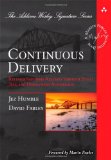 This book will help you to understand that the secret to quality software, reliably deployed, is to take a cross-functional approach. You will walk away from this book with an understanding of how to start implementing a continuous deployment pipeline, and you may also find yourself writing down a list of things to try, and tools to use. While not a tool-centric book, the authors provide many examples of tools to help you implement each phase of the process. Since no one book can cover every aspect of every step in the development process, the authors point you to many excellent resources if you want to learn more. While the authors have experience in, an a pre-disposition for, Agile techniques, the principles described in this book apply to any organization, whatever the process, though if you take the approach to heart, you will find yourself becoming more agile. This book covers every aspect of the development process from requirements, design, and coding, to acceptance testing, deployment and operations. While having a lot of material, the book is well organized and written. It's not a quick read, and you'll want to have a notebook or post-its handy to capture the idea it helps you to generate, but if you are interested in improving your deployment process you will find this book valuable, whether you are a developer, tester, release engineer, or someone who manages people in those roles.
This book will help you to understand that the secret to quality software, reliably deployed, is to take a cross-functional approach. You will walk away from this book with an understanding of how to start implementing a continuous deployment pipeline, and you may also find yourself writing down a list of things to try, and tools to use. While not a tool-centric book, the authors provide many examples of tools to help you implement each phase of the process. Since no one book can cover every aspect of every step in the development process, the authors point you to many excellent resources if you want to learn more. While the authors have experience in, an a pre-disposition for, Agile techniques, the principles described in this book apply to any organization, whatever the process, though if you take the approach to heart, you will find yourself becoming more agile. This book covers every aspect of the development process from requirements, design, and coding, to acceptance testing, deployment and operations. While having a lot of material, the book is well organized and written. It's not a quick read, and you'll want to have a notebook or post-its handy to capture the idea it helps you to generate, but if you are interested in improving your deployment process you will find this book valuable, whether you are a developer, tester, release engineer, or someone who manages people in those roles.
Related books
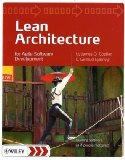 When I received my review copy of this book, I had high expections. And I was not disappointed.
As a C++ programmer in the early 90's Coplien's Advanced C++ Programming Styles and Idioms was a source of interview material when looking for programmers. It's a good bet that this book may fill the same role for those looking to see if candidates for architect roles understand what it means to be an architect in a Lean or Agile Organization. This book dispels the myth that Agile and Architecture don't go together and explains the balance between Agile architecture and too much Big Up Front Design. This book emphasizes the importance of frequent collaboration between stakeholders in defining a good architecture and helps you to understand the importance of architecture to the success of agile projects. With code examples throughout, this book emphasizes that architecture and coding must go together. After describing some general principles of how architecture can add value to an agile project, the authors explain the Data Context, Interaction (DCI) architecture, which provides an framework for building lean architectures. My one minor complaint is that the transition between the general discussions of lean architecture and the focused discussion of DCI was a bit abrupt. But this was a minor distraction from an enjoyable and informative read. Rich with citations and historical context, this book will be useful for anyone who is struggling with how to build systems that need to support complicated user interactions.
When I received my review copy of this book, I had high expections. And I was not disappointed.
As a C++ programmer in the early 90's Coplien's Advanced C++ Programming Styles and Idioms was a source of interview material when looking for programmers. It's a good bet that this book may fill the same role for those looking to see if candidates for architect roles understand what it means to be an architect in a Lean or Agile Organization. This book dispels the myth that Agile and Architecture don't go together and explains the balance between Agile architecture and too much Big Up Front Design. This book emphasizes the importance of frequent collaboration between stakeholders in defining a good architecture and helps you to understand the importance of architecture to the success of agile projects. With code examples throughout, this book emphasizes that architecture and coding must go together. After describing some general principles of how architecture can add value to an agile project, the authors explain the Data Context, Interaction (DCI) architecture, which provides an framework for building lean architectures. My one minor complaint is that the transition between the general discussions of lean architecture and the focused discussion of DCI was a bit abrupt. But this was a minor distraction from an enjoyable and informative read. Rich with citations and historical context, this book will be useful for anyone who is struggling with how to build systems that need to support complicated user interactions.
Related books
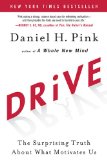 This is one of those books that describes something extremely obvious and intuitive that at the same time goes against what you were taught was "common sense." This would be a good book just for the survey of the (long) history of the study of the theory of motivation. It also concludes with a number of things you can do to create an environment that encourages mastery (as opposed to simply meeting goals) in your work and school. As an agile software developer I had a few aha! moments when you understand how agile practices really encourage flow and create environments where teams and individuals can be highly productive. As a parent, this book re-enforced that the way children approach learning and problems is something to be viewed with awe. If you're a manager, this book will encourage you to think about how teams work and how some common practices are counter-productive. It's a quick read that will get you thinking and learning.
This is one of those books that describes something extremely obvious and intuitive that at the same time goes against what you were taught was "common sense." This would be a good book just for the survey of the (long) history of the study of the theory of motivation. It also concludes with a number of things you can do to create an environment that encourages mastery (as opposed to simply meeting goals) in your work and school. As an agile software developer I had a few aha! moments when you understand how agile practices really encourage flow and create environments where teams and individuals can be highly productive. As a parent, this book re-enforced that the way children approach learning and problems is something to be viewed with awe. If you're a manager, this book will encourage you to think about how teams work and how some common practices are counter-productive. It's a quick read that will get you thinking and learning. Related books
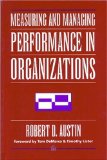 If you thought that performance review processes and incentive systems are often flawed, but wanted to understand why, Austin's book will give you a model to understand dysfunctional measurement processes, and a path to understanding how to avoid the dysfunctions and really help organizations and teams perform in a way that improves quality and gives customers what they want. Though the core of this book is an economic model, the book is quite readable and enjoyable. While this book was written before many people had heard of agile or Scrum, the model in the book also helps you understand why the approach of self-organizing teams that agile methods advocate can be very effective. Many of the conclusions in this book seem like common sense, but like many things, common sense is not synonymous with common practice, especially among people want to measure things. If you manage people consider reading this book to get a deeper understanding about incentive systems in addition to Behind Closed Doors: Secrets of Great Management which will help you to learn how to effectively manage people day-to-day to improve performance
If you thought that performance review processes and incentive systems are often flawed, but wanted to understand why, Austin's book will give you a model to understand dysfunctional measurement processes, and a path to understanding how to avoid the dysfunctions and really help organizations and teams perform in a way that improves quality and gives customers what they want. Though the core of this book is an economic model, the book is quite readable and enjoyable. While this book was written before many people had heard of agile or Scrum, the model in the book also helps you understand why the approach of self-organizing teams that agile methods advocate can be very effective. Many of the conclusions in this book seem like common sense, but like many things, common sense is not synonymous with common practice, especially among people want to measure things. If you manage people consider reading this book to get a deeper understanding about incentive systems in addition to Behind Closed Doors: Secrets of Great Management which will help you to learn how to effectively manage people day-to-day to improve performance
Related books
 Portfolio management sounds neither compelling nor agile, yet in this book Johanna Rothman explains not only the importance of portfolio management, but also how portfolio management and agile development approaches enable each other. By a combination of guidelines, stories, and references Rothman teaches you how to define a mission, prioritize your product development plan, and enable your organization to get more done while reducing technical debt, and enhancing flexibility. This is an approachable and engaging book that will appeal to project managers, technical leads, and anyone interested in understanding how to develop and execute a consistent project strategy.
Portfolio management sounds neither compelling nor agile, yet in this book Johanna Rothman explains not only the importance of portfolio management, but also how portfolio management and agile development approaches enable each other. By a combination of guidelines, stories, and references Rothman teaches you how to define a mission, prioritize your product development plan, and enable your organization to get more done while reducing technical debt, and enhancing flexibility. This is an approachable and engaging book that will appeal to project managers, technical leads, and anyone interested in understanding how to develop and execute a consistent project strategy.
Related books
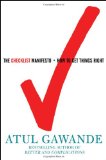 This is a book written by a surgeon, talking about how doctors, structural engineers, pilots and others use checklists to manage complexity and manage risk. While reading it, I kept thinking of all the things the scenarios he described has in common with software projects, and how the checklists reenforced the same values that agile software teams hold dear. Gawande illusrates how checklists help people be more creative, more productive and solve problems by allowing people to focus on the novel parts of a problem. What I especially liked was the recurring theme of how complex problems are best solved by teams and not heroic individuals, and how processes, like those guided by checklists can help foster teamwork. This is an easy to read book that helps you understand what all complex endeavors have in common, regardless of profession, and gives you one approach to managing this complexity. Read it if you want to understand how to write good checklists and use them effectively, and to address the negative perceptions colleagues have about processes and checklists.
This is a book written by a surgeon, talking about how doctors, structural engineers, pilots and others use checklists to manage complexity and manage risk. While reading it, I kept thinking of all the things the scenarios he described has in common with software projects, and how the checklists reenforced the same values that agile software teams hold dear. Gawande illusrates how checklists help people be more creative, more productive and solve problems by allowing people to focus on the novel parts of a problem. What I especially liked was the recurring theme of how complex problems are best solved by teams and not heroic individuals, and how processes, like those guided by checklists can help foster teamwork. This is an easy to read book that helps you understand what all complex endeavors have in common, regardless of profession, and gives you one approach to managing this complexity. Read it if you want to understand how to write good checklists and use them effectively, and to address the negative perceptions colleagues have about processes and checklists.Related books
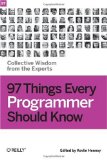 I contributed to this project, which both by the content, and the process by which it came to be, provides evidence that software development is about collaboration. craftsmanship, and careful attention to detail. This book is a chance to learn from the experiences of people who've worked hard not just at writing good code, but at creating good software systems. Some of the advice may be things you already know. Some items may be surprising. Read this book to learn, be challenged, and to understand why programming isn't just about languages and syntax.
I contributed to this project, which both by the content, and the process by which it came to be, provides evidence that software development is about collaboration. craftsmanship, and careful attention to detail. This book is a chance to learn from the experiences of people who've worked hard not just at writing good code, but at creating good software systems. Some of the advice may be things you already know. Some items may be surprising. Read this book to learn, be challenged, and to understand why programming isn't just about languages and syntax.Related books
 This book is a good guide to both CM and Agile principles, and it demonstrates how to use software configuration management to enable your team to be more agile. This book can guide you to understanding how to manage releases in an agile environment, and how to apply basic CM concepts like build and branching successfully. While not a replacement for a book on your agile method, this book is a primer on agile for those with a traditional release management background, and and a primer on CM for those who understand agile. After reading it you will have enough background to be productive, and a good sense of what you need to learn more about. In addition, this book covers topics such as how to leverage cloud service providers for infrastructure, how to leverage SCM to make off-shore development less painful, and how to evolve your SCM process in an agile (incremental) fashion. With a good structure that allows you to navigate the book quickly, and a good use of metaphor to describe concepts, this book will help a release managers, project managers, developers and architects use the SCM process to get the most out of their agile teams. (I was a reviewer of the manuscript, this review is based on the final edition.)
This book is a good guide to both CM and Agile principles, and it demonstrates how to use software configuration management to enable your team to be more agile. This book can guide you to understanding how to manage releases in an agile environment, and how to apply basic CM concepts like build and branching successfully. While not a replacement for a book on your agile method, this book is a primer on agile for those with a traditional release management background, and and a primer on CM for those who understand agile. After reading it you will have enough background to be productive, and a good sense of what you need to learn more about. In addition, this book covers topics such as how to leverage cloud service providers for infrastructure, how to leverage SCM to make off-shore development less painful, and how to evolve your SCM process in an agile (incremental) fashion. With a good structure that allows you to navigate the book quickly, and a good use of metaphor to describe concepts, this book will help a release managers, project managers, developers and architects use the SCM process to get the most out of their agile teams. (I was a reviewer of the manuscript, this review is based on the final edition.)Related books
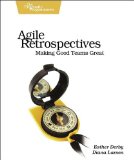 Teams often think about how to improve because they don't think that they have the time. Agile Project Retrospectives gives you the information you need to plan for a short, effective retrospective. The book isn't a replacement for a book like [[ASIN:0932633447 Project Retrospectives: A Handbook for Team Reviews]], but it can give someone interested in running a retrospective a good understanding of the goals, a framework of how to structure the retrospective, and a menu of exercises to apply at each phase. This book isn't magic; an effective retrospective takes thought and planning. But this book gives you the tools you need to facilitate an efficient and effective retrospective. Every project manager, scrum master, and technical leader should have a copy of this book. You'll not only want to read it; you will refer to it often.
Teams often think about how to improve because they don't think that they have the time. Agile Project Retrospectives gives you the information you need to plan for a short, effective retrospective. The book isn't a replacement for a book like [[ASIN:0932633447 Project Retrospectives: A Handbook for Team Reviews]], but it can give someone interested in running a retrospective a good understanding of the goals, a framework of how to structure the retrospective, and a menu of exercises to apply at each phase. This book isn't magic; an effective retrospective takes thought and planning. But this book gives you the tools you need to facilitate an efficient and effective retrospective. Every project manager, scrum master, and technical leader should have a copy of this book. You'll not only want to read it; you will refer to it often.Related books
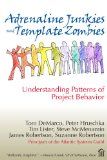 This book contains descriptions of 86 common organizational behaviors described in a concise and entertaining way, using stories, guidelines, and metaphor. This approach makes it easy for you to identify with similar situations in your present or past organizations, and remember them. Managers, developers, and students of organizational behavior will enjoy reading this book and want a copy around for reference. Those with more experience will find that the patterns resonate with them, and those newer to software development will get an idea of what to expect in team dynamics. Like may great books, you'll have learned much from the experience of the authors while being entertained and amused.
This book contains descriptions of 86 common organizational behaviors described in a concise and entertaining way, using stories, guidelines, and metaphor. This approach makes it easy for you to identify with similar situations in your present or past organizations, and remember them. Managers, developers, and students of organizational behavior will enjoy reading this book and want a copy around for reference. Those with more experience will find that the patterns resonate with them, and those newer to software development will get an idea of what to expect in team dynamics. Like may great books, you'll have learned much from the experience of the authors while being entertained and amused.Related books
 This is an excellent work that guided me though my first formal management experience. The book weaves its lessons into a story which helped you to understand how to apply what you learned. Like many important books, it explains some simple rules that can be difficult to execute in practice. The downside of reading this book is that you may realized that you're not being managed well (or have not been in the past) and you can no longer live in blissful ignorance. All technical managers at all levels should have read a copy of this book. The section on having one on ones by itself is worth the price.
This is an excellent work that guided me though my first formal management experience. The book weaves its lessons into a story which helped you to understand how to apply what you learned. Like many important books, it explains some simple rules that can be difficult to execute in practice. The downside of reading this book is that you may realized that you're not being managed well (or have not been in the past) and you can no longer live in blissful ignorance. All technical managers at all levels should have read a copy of this book. The section on having one on ones by itself is worth the price. Related books
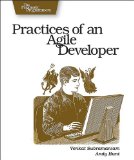 A Pragmatic, method agnostic, guide to the essential practices for an agile team. The book covers the whole lifecycle form planning to design and coding, showing you how to balance the agile dogma with practical considerations. The book also addresses common misconceptions about agile practices. People new to agile will benefit from the book, but those who have been working using an agile method will get a lot from a fresh look at why they are using agile practices.
A Pragmatic, method agnostic, guide to the essential practices for an agile team. The book covers the whole lifecycle form planning to design and coding, showing you how to balance the agile dogma with practical considerations. The book also addresses common misconceptions about agile practices. People new to agile will benefit from the book, but those who have been working using an agile method will get a lot from a fresh look at why they are using agile practices.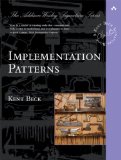 The title is misleading, as the book really isn't a Patterns book, and it's not a detailed handbook. This is a good terse summary of principles to apply when writing code that others will need to work with. While the book is light on details or examples, reading it can help you consider what coding and micro design conventions to apply to make your code more readable. This is a good companion to Bob Martin's Clean Code as Martin and Beck, excellent coders both, sometimes make opposite recommendations about the same situations. These contrasts drive home the point that rules for good code need to be considered, not just accepted without thought.
The title is misleading, as the book really isn't a Patterns book, and it's not a detailed handbook. This is a good terse summary of principles to apply when writing code that others will need to work with. While the book is light on details or examples, reading it can help you consider what coding and micro design conventions to apply to make your code more readable. This is a good companion to Bob Martin's Clean Code as Martin and Beck, excellent coders both, sometimes make opposite recommendations about the same situations. These contrasts drive home the point that rules for good code need to be considered, not just accepted without thought.Related books
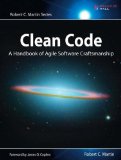 The book is a great guide to the basic qualities of good code. While many of the guidelines were familiar, reading the book helped me reconsider some rules that I had followed out of habit, but which no longer make sense. Like many good books even if you know and agree what it says, reading the book can help you explain "the obvious" to others. Clean Code has all the qualities of a classic book. Bob does not just a list of rules for "good" code. He explains why following the rules makes for better code, and provides several examples of how following the rules make arguably good code (like JUnit) better. Buy this book if you write code or manage people who write code. This is a must read if you are developing a coding standard for your team. Even if you don't accept all of Bob's guidelines, reading this book will help you think about what standards make sense for your team.
The book is a great guide to the basic qualities of good code. While many of the guidelines were familiar, reading the book helped me reconsider some rules that I had followed out of habit, but which no longer make sense. Like many good books even if you know and agree what it says, reading the book can help you explain "the obvious" to others. Clean Code has all the qualities of a classic book. Bob does not just a list of rules for "good" code. He explains why following the rules makes for better code, and provides several examples of how following the rules make arguably good code (like JUnit) better. Buy this book if you write code or manage people who write code. This is a must read if you are developing a coding standard for your team. Even if you don't accept all of Bob's guidelines, reading this book will help you think about what standards make sense for your team.Related books
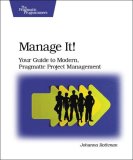 Manage It! will help you understand how to manage projects effectively, taking into account the needs of the people working on the project as well as the needs of the business sponsors. In this regard Johanna Rothman follows in the steps of authors like Jerry Weinberg by showing you how to set up a project environment that helps software developers be more effective and thus be better able to deliver value to their customers. This book has pragmatic advice on how to make progress and issues visible, how to plan a project, and most everything else you need to help a project come to a good conclusion. This book is unique in that while it discusses the benefits of agile lifecycles, it shows you how to make progress in a variety of software lifecycles, and gives advice on when to use the various lifecycles she discusses. Buy this book if you want to be a more effective project manager (or technical lead who works with project managers), or if you want to be more agile but are not sure how.
Manage It! will help you understand how to manage projects effectively, taking into account the needs of the people working on the project as well as the needs of the business sponsors. In this regard Johanna Rothman follows in the steps of authors like Jerry Weinberg by showing you how to set up a project environment that helps software developers be more effective and thus be better able to deliver value to their customers. This book has pragmatic advice on how to make progress and issues visible, how to plan a project, and most everything else you need to help a project come to a good conclusion. This book is unique in that while it discusses the benefits of agile lifecycles, it shows you how to make progress in a variety of software lifecycles, and gives advice on when to use the various lifecycles she discusses. Buy this book if you want to be a more effective project manager (or technical lead who works with project managers), or if you want to be more agile but are not sure how.Related books
 This a classic book that anyone who build computer systems should read. Some of the specific examples are dated, though many caused me to nod in acknowledgment, especially his observations about alarm clocks and TV remotes, Inmates describes goal directed design, the concept of Pesonas, ideas which, whether they make sense for your project are not, are ones that you should be aware of. This book also explains what "polite software" is and emphasizes the market advantages to good interaction design. Even if this book doesn't change the way you work, it will help you think about the relationship between interaction design and programming. Among the interesting points Cooper makes are Customer Driven isn't aways the best model (customer influenced is better), and neither is Engineering Driven; software designers should go beyond customers say they want and help them to understand what they need. There were a few things towards the end of the book that struck me as just wrong. For example Cooper says that most developers don't believe that they are the best people to test their code. Most Agile software developers would challenge that point. Agile developers would also challenge the recurring theme that the engineering team can't make the leap to understanding the customer enough to build good interaction design. He ignores the value of a specializing generalist, which is an important concept in today's projects. Regardless, this is a book that anyone building software systems should read, if only to understand the concepts underlying interaction design.
This a classic book that anyone who build computer systems should read. Some of the specific examples are dated, though many caused me to nod in acknowledgment, especially his observations about alarm clocks and TV remotes, Inmates describes goal directed design, the concept of Pesonas, ideas which, whether they make sense for your project are not, are ones that you should be aware of. This book also explains what "polite software" is and emphasizes the market advantages to good interaction design. Even if this book doesn't change the way you work, it will help you think about the relationship between interaction design and programming. Among the interesting points Cooper makes are Customer Driven isn't aways the best model (customer influenced is better), and neither is Engineering Driven; software designers should go beyond customers say they want and help them to understand what they need. There were a few things towards the end of the book that struck me as just wrong. For example Cooper says that most developers don't believe that they are the best people to test their code. Most Agile software developers would challenge that point. Agile developers would also challenge the recurring theme that the engineering team can't make the leap to understanding the customer enough to build good interaction design. He ignores the value of a specializing generalist, which is an important concept in today's projects. Regardless, this is a book that anyone building software systems should read, if only to understand the concepts underlying interaction design.Related books
 Implementing Lean Software Development is an essential resource if you want to understand the value of lean software development. It explains the theory of lean manaufacturing and how it applies to software development. It contains practical advice for implementing Lean and anecdotes to help you to understand the value of Lean. This is a great addition to the library of any agile developer or project manager.
Implementing Lean Software Development is an essential resource if you want to understand the value of lean software development. It explains the theory of lean manaufacturing and how it applies to software development. It contains practical advice for implementing Lean and anecdotes to help you to understand the value of Lean. This is a great addition to the library of any agile developer or project manager.Related books
 A Wicked Problem is a problem where some of the solution space lies within the problem space; the problem is only fully understood after it is solved. Thsi book describes how many programming problems fall into the catgegory of wicked problems and how waterfall softwarae development practices are not well suited to these kinds of problems.This book explains how agille approaches are more suited for many software development projects. In addition to all of this, this book had many excellent references.
A Wicked Problem is a problem where some of the solution space lies within the problem space; the problem is only fully understood after it is solved. Thsi book describes how many programming problems fall into the catgegory of wicked problems and how waterfall softwarae development practices are not well suited to these kinds of problems.This book explains how agille approaches are more suited for many software development projects. In addition to all of this, this book had many excellent references. This book is an excellent overview of why Continuous Integration is important and about more than just compiling frequently. The book helps you to understand why to do CI, what you can do beyond building, and how to do it. In addition to general principles, the book points you to some excellent tools and resources. This book is an excellent companion to Software Configuration Management Patterns; it provides teriffic information that support the build patterns in that book.
This book is an excellent overview of why Continuous Integration is important and about more than just compiling frequently. The book helps you to understand why to do CI, what you can do beyond building, and how to do it. In addition to general principles, the book points you to some excellent tools and resources. This book is an excellent companion to Software Configuration Management Patterns; it provides teriffic information that support the build patterns in that book.Related books
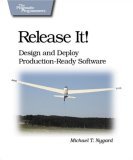 This book helps you to understand why creating production ready code requires work at many levels: creating the deployment architecture, operations scenarios, and just plain writing code and testing. The book covers issues that every architect, developer and release engineer should know. The book has principles, patterns, and resources to help you identify production problems, prevent them, and survive them when all else fails. One of the better features of the book is the stories that help you to understand issues and demonstrate that Nygard's lessons are based in experience. The lessons are (as the name of the series suggests) pragmatic, and each chapter leaves you with enough information to make changes to improve your application. In books of this sort there is a balance between "principles" that are timeless and "how to" techniques that you can use immediately. This book is biased slightly towards Java, and contains a few references to current tools, there are enough general principles that there is little in the book that will date it. As I read the book I found information about many topics that arose in each project that I have worked on, as well as things that I felt that I needed to learn more about. After I finished the book I felt energized to do things better. If you build enterprise applications buy this book to learn how to build more production-ready applications. If you already know the lessons in the book, buy a copy or two for your colleagues who may not so that your life will be easier and you can get fewer late-night phone calls about a system you helped build.
This book helps you to understand why creating production ready code requires work at many levels: creating the deployment architecture, operations scenarios, and just plain writing code and testing. The book covers issues that every architect, developer and release engineer should know. The book has principles, patterns, and resources to help you identify production problems, prevent them, and survive them when all else fails. One of the better features of the book is the stories that help you to understand issues and demonstrate that Nygard's lessons are based in experience. The lessons are (as the name of the series suggests) pragmatic, and each chapter leaves you with enough information to make changes to improve your application. In books of this sort there is a balance between "principles" that are timeless and "how to" techniques that you can use immediately. This book is biased slightly towards Java, and contains a few references to current tools, there are enough general principles that there is little in the book that will date it. As I read the book I found information about many topics that arose in each project that I have worked on, as well as things that I felt that I needed to learn more about. After I finished the book I felt energized to do things better. If you build enterprise applications buy this book to learn how to build more production-ready applications. If you already know the lessons in the book, buy a copy or two for your colleagues who may not so that your life will be easier and you can get fewer late-night phone calls about a system you helped build.Related books
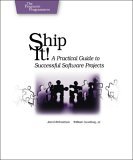 If you need a good overview of what it takes to deliver software, give this book a look. It is easy to read, clearly written, and covers the important stuff. The book is geared at people who are less than experts, and as such covers some of the topics very briefly, but the book has some excellent pointers to other sources. The authors do a great job of collecting pointers to resources where you can learn more; you will want to keep the book around as a reference for them. The authors talk about a form of agile development that emphasizes tracer bullet development and a feature-based (as opposed to time boxed) approach to setting a delivery schedule. I tend to think that time boxed approaches are more useful, but the other good information in the book still makes sense if you use any approach to developing software. The authors also have some very practical advice on tool selection. The tools and infrastructure section of the book have pragmatic advice on how to implement the patterns in the Software Configuration Management Patterns book, and I wish that the authors had referenced the SCM Patterns book, if for no other reason than to help establish a common vocabulary in our domain. Over all, this is worth a read to learn (or reenforce) some of the basics about keeping a project running well. And if you already know everything in the book, buy a copy for your colleagues who don't!
If you need a good overview of what it takes to deliver software, give this book a look. It is easy to read, clearly written, and covers the important stuff. The book is geared at people who are less than experts, and as such covers some of the topics very briefly, but the book has some excellent pointers to other sources. The authors do a great job of collecting pointers to resources where you can learn more; you will want to keep the book around as a reference for them. The authors talk about a form of agile development that emphasizes tracer bullet development and a feature-based (as opposed to time boxed) approach to setting a delivery schedule. I tend to think that time boxed approaches are more useful, but the other good information in the book still makes sense if you use any approach to developing software. The authors also have some very practical advice on tool selection. The tools and infrastructure section of the book have pragmatic advice on how to implement the patterns in the Software Configuration Management Patterns book, and I wish that the authors had referenced the SCM Patterns book, if for no other reason than to help establish a common vocabulary in our domain. Over all, this is worth a read to learn (or reenforce) some of the basics about keeping a project running well. And if you already know everything in the book, buy a copy for your colleagues who don't!Related books
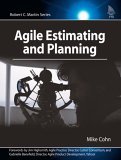 This clearly written book provides insights into some common and vexing problems about how to do estimation and planning. This book helps you to prioritize what you want to build as well as as how long it will take to build it. The facts are complimented with stories from Mike Cohn's experience, which makes this book entertaining as well as informative. Much of the information in the book sounds obvious, but since few projects get estimation, scoping and planning right, it's pretty clear that it's only obvious in retospect. This book is a must have for people who are running agile teams and those who play the role of product owners. It will remain a useful reference througout the project. Even those on non-agile teams will find the chapters on selecting and prioritizing features useful.
This clearly written book provides insights into some common and vexing problems about how to do estimation and planning. This book helps you to prioritize what you want to build as well as as how long it will take to build it. The facts are complimented with stories from Mike Cohn's experience, which makes this book entertaining as well as informative. Much of the information in the book sounds obvious, but since few projects get estimation, scoping and planning right, it's pretty clear that it's only obvious in retospect. This book is a must have for people who are running agile teams and those who play the role of product owners. It will remain a useful reference througout the project. Even those on non-agile teams will find the chapters on selecting and prioritizing features useful.Related books
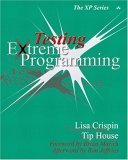 This book explains, in detail, the value of having a tester role on an XP project. Much of what is written on XP focuses on the role of developers in writing tests, and this book will help you understand the value that testing professionals can add to an XP, or other agile, project. The function of a tester changes when a team applies XP; In the spirt of lean software development, this book shows you how to apply the skills of testers in a new environment. One minor flaw in the book is that it is targeted at testers. While testers need to understand how to apply their skills to an XP environment, others such as Coaches, programmers and project managers also need to understand the value of testers. Get this book to understand how testers can improve your XP project.
This book explains, in detail, the value of having a tester role on an XP project. Much of what is written on XP focuses on the role of developers in writing tests, and this book will help you understand the value that testing professionals can add to an XP, or other agile, project. The function of a tester changes when a team applies XP; In the spirt of lean software development, this book shows you how to apply the skills of testers in a new environment. One minor flaw in the book is that it is targeted at testers. While testers need to understand how to apply their skills to an XP environment, others such as Coaches, programmers and project managers also need to understand the value of testers. Get this book to understand how testers can improve your XP project.Related books
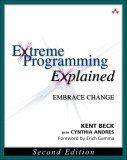 This is an excellent book about how to develop software quickly in the face of changing requirements, and the definitive description of what Extreme Programming is. The second edition reflects the experience of doing XP for the 5 years since the first edition came out. This edition clearly explains the relationships between principles, practices and values, which is a frequent topic of discussion in the XP community. Extreme Programming Explained, 2nd Edition is really about the human side of programming; With this book Kent Beck has earned a seat next to Jerry Weinberg as someone who understands how to apply an understanding of human nature to the problem of how to build software effectively. Get this book if you want to apply XP in your organization, or even if you simply want to improve your practices; there is much to learn from the XP approach, even if you can not, or will not, apply it fully.
This is an excellent book about how to develop software quickly in the face of changing requirements, and the definitive description of what Extreme Programming is. The second edition reflects the experience of doing XP for the 5 years since the first edition came out. This edition clearly explains the relationships between principles, practices and values, which is a frequent topic of discussion in the XP community. Extreme Programming Explained, 2nd Edition is really about the human side of programming; With this book Kent Beck has earned a seat next to Jerry Weinberg as someone who understands how to apply an understanding of human nature to the problem of how to build software effectively. Get this book if you want to apply XP in your organization, or even if you simply want to improve your practices; there is much to learn from the XP approach, even if you can not, or will not, apply it fully.Related books
- Software Configuration Management Patterns: Effective Teamwork, Practical Integration
- The Pragmatic Programmer: From Journeyman to Master
- Test Driven Development: By Example
- The Psychology of Computer Programming, Silver Anniversary Edition
- Agile Estimating and Planning
- User Stories Applied : For Agile Software Development (Addison-Wesley Signature Series)
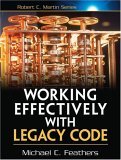 This book shows you how to apply patterns and refactorings to the task of untangling legacy code so that you can apply effective techniques like test driven development as you change the code. Since there will always be legacy code, this is a very practical book. The author emphasises the role of testing as a change enabler in a way that echos the the ideas in the SCM Patterns book.
This book shows you how to apply patterns and refactorings to the task of untangling legacy code so that you can apply effective techniques like test driven development as you change the code. Since there will always be legacy code, this is a very practical book. The author emphasises the role of testing as a change enabler in a way that echos the the ideas in the SCM Patterns book.Related books
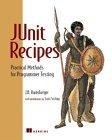 Get this book both as an introduction to what JUnit can do for you and also as a reference when you are looking for information on how to solve a particular testing problem. The book covers the basics of using JUnit as well as issues around database and J2EE testing. It is filled with pointers to many frameworks and resources that can simplify your testing experience. This is not just a testing cookbook. J.B. also discusses issues such as how to design for testing (and how that can improve your architecture) as well as what to do when you need to test legacy code. This is an excellent guide to the details of how to use JUnit effectively.
Get this book both as an introduction to what JUnit can do for you and also as a reference when you are looking for information on how to solve a particular testing problem. The book covers the basics of using JUnit as well as issues around database and J2EE testing. It is filled with pointers to many frameworks and resources that can simplify your testing experience. This is not just a testing cookbook. J.B. also discusses issues such as how to design for testing (and how that can improve your architecture) as well as what to do when you need to test legacy code. This is an excellent guide to the details of how to use JUnit effectively.Related books
 This book explains why lean manufacturing works. There is much you can learn about lean software development by learning about lean thinking in this, more concrete, domain. Read this book to learn the more general concepts of lean production so that you can better understand them and better explain them to your software development colleagues and management.
This book explains why lean manufacturing works. There is much you can learn about lean software development by learning about lean thinking in this, more concrete, domain. Read this book to learn the more general concepts of lean production so that you can better understand them and better explain them to your software development colleagues and management.Related books
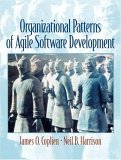 People build software systems in organizations, and the interesting problems often occur at the places where technology issues and people issues intersect. An understanding of how software organizations work is essential to building good software systems. Coplien and Harrison are two of the pioneers in writing patterns about software organizations, and this book is a useful guide to helping you understand how to build effective software development organizations.
People build software systems in organizations, and the interesting problems often occur at the places where technology issues and people issues intersect. An understanding of how software organizations work is essential to building good software systems. Coplien and Harrison are two of the pioneers in writing patterns about software organizations, and this book is a useful guide to helping you understand how to build effective software development organizations.Related books
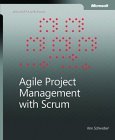 This book helped me understand more details about how to implement Scrum. The combines some simple overviews of Scrum rules and practices with case studies. The rules of Scrum are simple. Apply these rules in your context can be tricky. I found that the case studies that thread throughout the book really helped me to understand some of the nuances of the Scrum process. And if you want a checklist, there is a appendix that summarizes the rules of Scrum. This is a great book if you want to learn about Scrum as a project management tool, or if you have been trying to use Scrum and want a chance to renew your understanding.
This book helped me understand more details about how to implement Scrum. The combines some simple overviews of Scrum rules and practices with case studies. The rules of Scrum are simple. Apply these rules in your context can be tricky. I found that the case studies that thread throughout the book really helped me to understand some of the nuances of the Scrum process. And if you want a checklist, there is a appendix that summarizes the rules of Scrum. This is a great book if you want to learn about Scrum as a project management tool, or if you have been trying to use Scrum and want a chance to renew your understanding.Related books
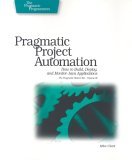 Prag Auto is an excellent companion to the Scm patterns book if you are doing Java Dev. It uses simple examples to show you how to set up a private workspace, integration build , release line among others. using open source tools. I wish that the book had referenced the patterns by name so as to set up a common vocabulary.
Prag Auto is an excellent companion to the Scm patterns book if you are doing Java Dev. It uses simple examples to show you how to set up a private workspace, integration build , release line among others. using open source tools. I wish that the book had referenced the patterns by name so as to set up a common vocabulary.Related books
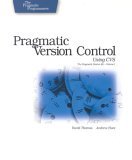 Dave Thomas and Andy Hunt have written an excellent book, Pragmatic Version Control which explains how to use CVS in a basic and effective way. This book is an excellent companion to the SCM Patterns Book.
Dave Thomas and Andy Hunt have written an excellent book, Pragmatic Version Control which explains how to use CVS in a basic and effective way. This book is an excellent companion to the SCM Patterns Book.Related books
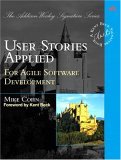 This is an excellent guide to writing User Stories. In addition to explaining what user stories are and how to write them, the book shows you how user stories fit into the development process and answers many of the common questions that arise when one starts writing stories. If you want to start using stories as part of your development process, buy this book; you'll want to read it and have it around for reference later.
This is an excellent guide to writing User Stories. In addition to explaining what user stories are and how to write them, the book shows you how user stories fit into the development process and answers many of the common questions that arise when one starts writing stories. If you want to start using stories as part of your development process, buy this book; you'll want to read it and have it around for reference later.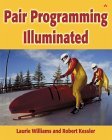 This book answers many common questions about Pair Programming and supports the answers with data and stories. This is a very readable book, and will be an excellent resource for anyone trying to implement pair programming, or convince others of its usefulness in appropriate situations.
This book answers many common questions about Pair Programming and supports the answers with data and stories. This is a very readable book, and will be an excellent resource for anyone trying to implement pair programming, or convince others of its usefulness in appropriate situations.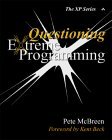 In this book McBreen gives a well reasoned discussion of what XP is and is not, when it works and when it might not work. The book is positive about the merits of XP, when used in the right setting. This book will be valuable to anyone who is considering changing their development approach, even is they are not considering Extreme Programming. Both enthusiast and skeptics alike will find the material in the book thought provoking.
In this book McBreen gives a well reasoned discussion of what XP is and is not, when it works and when it might not work. The book is positive about the merits of XP, when used in the right setting. This book will be valuable to anyone who is considering changing their development approach, even is they are not considering Extreme Programming. Both enthusiast and skeptics alike will find the material in the book thought provoking.Related books
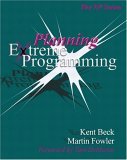 Planning Extreme Programming gives you advice on how to fit the XP Planning game, and related aspects into the larger context. This book will be particularly useful if you have had to reconcile the XP approach of incremental development and planning with an organization that takes a master plan approach.
Planning Extreme Programming gives you advice on how to fit the XP Planning game, and related aspects into the larger context. This book will be particularly useful if you have had to reconcile the XP approach of incremental development and planning with an organization that takes a master plan approach.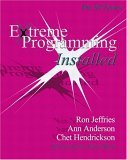 Extreme Programming Installed describes how to implement XP practices with practical advice based on experience. Buy this book when you are ready to implement XP for your team.
Extreme Programming Installed describes how to implement XP practices with practical advice based on experience. Buy this book when you are ready to implement XP for your team.Related books
 The principles that this book discusses: Release, Collaboration Ensemble and Play are extremely relevant to creating effective software teams. The principles are inspired by observing how theatre companies work, but they also have a basis in lean manufacturing. If you work as a software developer or manager and have ever worked on a theatre production (community theatre or at school) a light will go on immediately. If you haven't The data that the authors provide about lean manufacturing practices and software development will convince you that there is a lot that we can learn from this metaphor. The theatre examples will be helpful in explaining how the principles work if you need to communicate them to a manager who does not understand software development. Buy this book and place it along side your books on agile software development; you will want to read it and refer back to it frequently.
The principles that this book discusses: Release, Collaboration Ensemble and Play are extremely relevant to creating effective software teams. The principles are inspired by observing how theatre companies work, but they also have a basis in lean manufacturing. If you work as a software developer or manager and have ever worked on a theatre production (community theatre or at school) a light will go on immediately. If you haven't The data that the authors provide about lean manufacturing practices and software development will convince you that there is a lot that we can learn from this metaphor. The theatre examples will be helpful in explaining how the principles work if you need to communicate them to a manager who does not understand software development. Buy this book and place it along side your books on agile software development; you will want to read it and refer back to it frequently.Related books
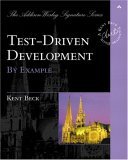 Through examples and a collection of patterns, this book explains what test driven development is, and what it is for. Every agile developer should read this book.
Through examples and a collection of patterns, this book explains what test driven development is, and what it is for. Every agile developer should read this book.Related books
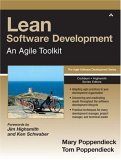 This is an excellent discussion of how the principles of Lean Manufacturing apply to Software Development. The authors explain why the usual metaphor of software as manufacturing is not quite right, and why the metaphor of Lean Manufacturing is. It is well written and will be useful to refer to as a reference.
This is an excellent discussion of how the principles of Lean Manufacturing apply to Software Development. The authors explain why the usual metaphor of software as manufacturing is not quite right, and why the metaphor of Lean Manufacturing is. It is well written and will be useful to refer to as a reference.Related books
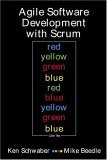 Excellent book that explains Scrum, one of the more popular agile development techniques. The approach in this book is very pragmatic. The authors discuss what Scrum is and how to apply it in various environments.
Excellent book that explains Scrum, one of the more popular agile development techniques. The approach in this book is very pragmatic. The authors discuss what Scrum is and how to apply it in various environments.Related books
 You should buy this book if you have any role in making decisions about your project. It discusses how how manage risks and explains why some corporate cultures discourage risk management, often to their disadvantage. The writing is very clear. This is a quick and informative read.
You should buy this book if you have any role in making decisions about your project. It discusses how how manage risks and explains why some corporate cultures discourage risk management, often to their disadvantage. The writing is very clear. This is a quick and informative read.Related books
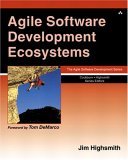 An excellent survey to the principles of agile development approaches such as Extreme Programming , SCRUM, and others. The book mixes discussions of the core ideas with interviews with some of the founders of the Agile Alliance .
An excellent survey to the principles of agile development approaches such as Extreme Programming , SCRUM, and others. The book mixes discussions of the core ideas with interviews with some of the founders of the Agile Alliance .Related books